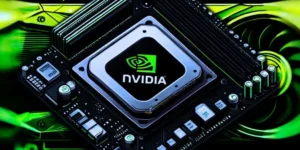Cadence Design Systems stands as a vanguard of innovation and technological leadership, having fundamentally transformed the field of electronic design automation (EDA) and hardware solutions. Cadence has risen as a global trailblazer through groundbreaking advancements, providing cutting-edge software and hardware solutions that empower engineers and designers to shape intricate integrated circuits and semiconductor devices. This article delves into the extraordinary journey of Cadence Design Systems as a hardware company, unveiling its profound contributions, transformative influence across industries, and pivotal role in shaping the contemporary and future landscapes of electronic design and hardware technology.
Founding and Early Focus
The roots of Cadence Design Systems trace back to its founding in 1988 by Dr. James D. Solomon and Dr. Alberto Sangiovanni-Vincentelli. Their visionary mission centered on revolutionizing integrated circuit design, verification, and manufacturing paradigms. The early emphasis on crafting sophisticated EDA tools paved the way for Cadence’s trajectory as a precision hardware technology pioneer.
Electronic Design Automation (EDA) Solutions
Cadence’s dedication to innovation has yielded a comprehensive array of EDA solutions addressing the diverse semiconductor design and verification stages. These software tools encompass a spectrum of applications, spanning digital design, analog and mixed-signal design, verification, and system-level design. Collectively, they empower engineers to engineer highly efficient and optimized integrated circuits.
Digital Design and Verification
Among the most profound contributions of Cadence is its impact on digital design and verification. The suite of software tools empowers engineers to conceive, design, and validate digital circuits, ensuring their functionality, performance, and timing precision. The transformative power of innovations is evident in the expedited design cycle, facilitating faster time-to-market and enhanced product quality.
Analog and Mixed-Signal Design
Cadence’s influence extends to analog and mixed-signal design—a fundamental aspect of contemporary semiconductor development. The company’s tools allow engineers to conceive and simulate intricate analog and mixed-signal circuits. These tools guarantee the precision, stability, and performance of circuits. Its solutions are instrumental in creating essential components like sensors, amplifiers, and power management circuits.
Verification and Functional Safety
In safety-critical contexts, Cadence’s hardware and software solutions are pivotal in ensuring functional safety. The company’s tools enable engineers to verify that semiconductor devices comply with stringent safety standards and requirements. This capacity is paramount for industries such as automotive, aerospace, and medical devices, where the reliability and safety of components are non-negotiable.
Impact on Diverse Industries
Cadence’s hardware and software innovations have orchestrated a transformative impact across various industries, reshaping their landscapes in profound ways.
- Microelectronics: Cadence’s EDA solutions have spearheaded a paradigm shift in the design and verification of microelectronics devices. It has precipitated technological breakthroughs across various industries, substantiating the company’s status as a trailblazer.
- Automotive: The company’s tools have been pivotal in developing semiconductor components for advanced driver assistance systems (ADAS), autonomous vehicles, and electrification—an instrumental contribution to the evolution of modern automotive technology.
- Consumer Electronics: Cadence’s contributions have been instrumental in redefining the consumer electronics landscape, facilitating the creation of smartphones, laptops, and intelligent devices seamlessly integrated into daily life.
Leading the Semiconductor Technology Evolution
Cadence’s influence in the hardware domain positions it as an indomitable force in the ongoing evolution of semiconductor technology. The company’s groundbreaking innovations in EDA tools, verification, and design optimization play an instrumental role in propelling progress within the semiconductor industry, thus charting the trajectory of the entire electronics sector.
Conclusion
Cadence Design Systems’ journey as a hardware company underscores its unwavering commitment to innovation, precision, and excellence. From its formative strides in electronic design automation tools to its contemporary stature as a global leader in semiconductor design solutions, its hardware and software advancements have redefined the conventions of integrated circuit and semiconductor device creation, validation, and enhancement.
As Cadence continues to shatter the limits of technological advancement, its legacy as a transformative catalyst in the electronic design and hardware technology industry remains etched in stone. This legacy inspires generations of engineers, propelling the world towards a future resonant with unmatched semiconductor innovation.











